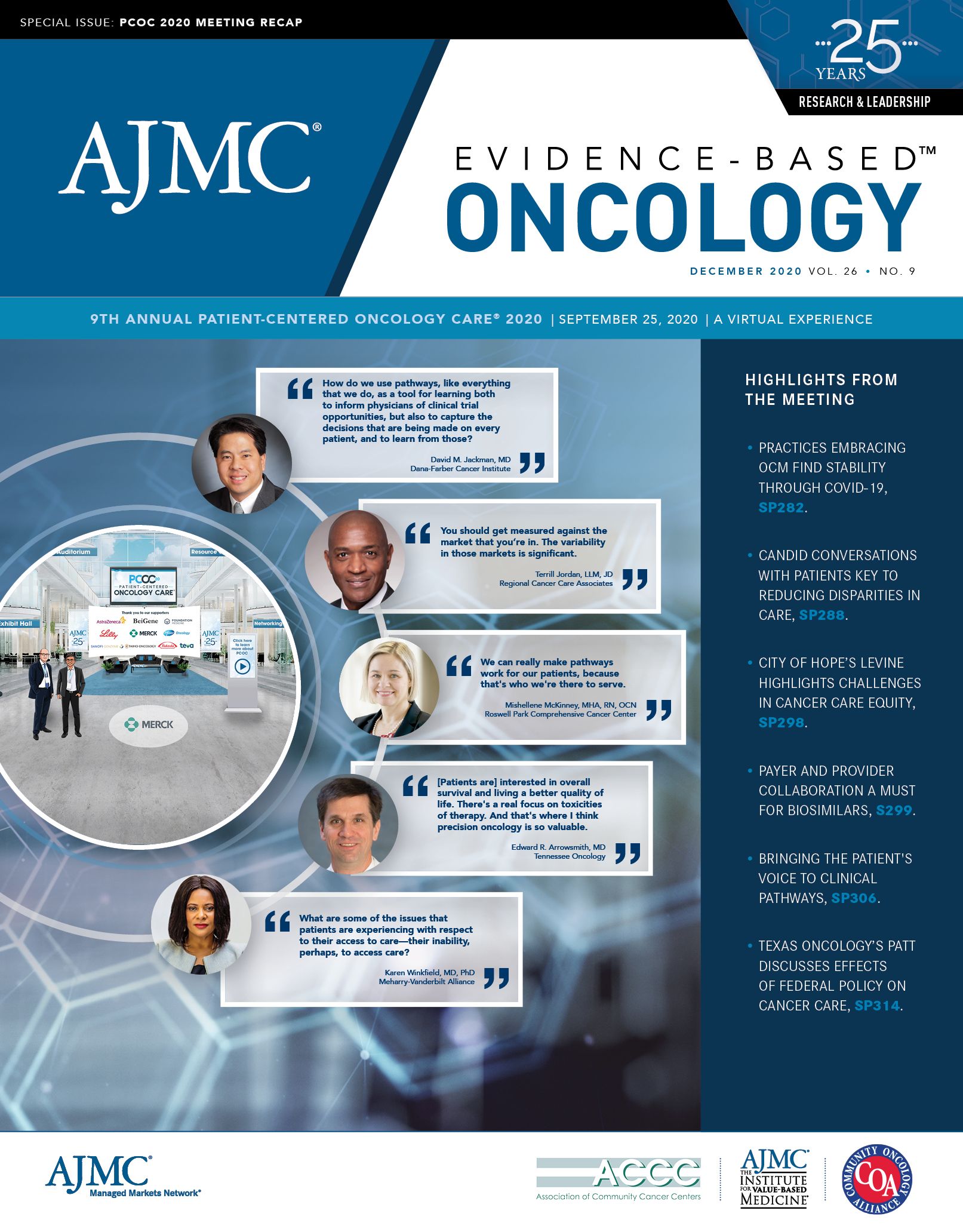- Center on Health Equity & Access
- Clinical
- Health Care Cost
- Health Care Delivery
- Insurance
- Policy
- Technology
- Value-Based Care
Implementation of Chronic Care Management and Telehealth in Oncology
Panelists at Patient-Centered Oncology Care® 2020 discussed practical methods and the potential benefits of utilizing chronic care management (CCM) billing and telehealth in oncology.
In principle, the Chronic Care Management (CCM) services and billing codes introduced by the CMS in 2015 benefit physicians and patients. Physicians are reimbursed for extra care coordination services provided to patients with chronic conditions outside of office visits. Patients who otherwise may be more likely to visit the hospital can receive the monitoring they need to avoid being admitted.
But like most ideas that are good in theory, it’s a bit more complicated in practice.
Managing chronic conditions and the importance of telehealth and disparities in its use were the topics of discussion led by Patient-Centered Oncology Care® Cochair Kashyap Patel, MD, who is the CEO of Carolina Blood and Cancer Care Associates of Rock Hill, South Carolina. The panel included Roberta Buell, MBA, a nationally recognized expert in oncology reimbursement and principal for provider services and reimbursement information at onPoint Oncology Inc; Johnetta Blakely, MD, executive director of health-related outcomes research at Tennessee Oncology; and Robert Daly, MD, MBA, a medical oncologist at Memorial Sloan Kettering Cancer Center.
A Practical Approach to CCM Billing
“I believe all oncologists do chronic care management,” Buell said at the start of the discussion. “You perform the task, but you don’t bill for it.”
Part of the confusion, she said, is that most are familiar with the original version of CCM, which required patients to have 2 or more chronic conditions expected to last 12 months or more, which put them at risk of unnecessary hospitalization or put their lives at risk. But there are now more billable services, including principal care management (PCM), which includes patients with just 1 chronic condition. Most of all, billing is not restricted to just 1 physician per month.
“When PCM came out last year, where you could focus on one problem and didn’t have to worry about whether other physicians were billing for it—all the restrictions that you were talking about with CCM—I thought it was going to sweep oncology,” Buell said. “And so far this year, I have zero [billings for it] in my database.”
Patel said a potential reason oncologists are not quick to adopt CCM is that the reimbursement may not seem significant enough. But that line of thinking can hurt a practice in a system that is shifting from volume- to value-based care.
“[With] chronic care management, you will find problems, you will find care discrepancies as we’ve talked about today,” Buell said. She said that with the services offered in CCM, such as transitional care management and advanced care planning, physicians can better treat their patients for more prospective payment in capitation or episode-based care models. But another obstacle to the adoption of CCM in oncology is that the Oncology Care Model (OCM) does not allow doctors to bill for it.
“What I recommend is for people to do it on a limited basis,” Buell said. “So take one population in your practice—if you’re not an OCM practice—or take your non-Medicare patients because these are CPT [Current Procedural Terminology] codes, so some of your commercial payers are going to pay you for it, as well as your Medicare Advantage patients.”
Blakely agreed that starting small is key in implementing CCM. At Tennessee Oncology, the practice focused on Hierarchical Condition Category (HCC) coding to identify high-risk patients with chronic conditions and knowing which insurers are willing to participate in CCM.
“Rome was not built in a day, and we have to make sure that we’ve learned enough so that when we scale it, we can get our buy-in from our physicians and other people, because you’re asking them to do more work,” Blakely said. She said that in a change-fatigued field, it adds another box to tick.
Technology in Chronic Care Management: Benefits and Disparities
Telehealth has seen a boom in the coronavirus disease 2019 (COVID-19) pandemic, but there are serious disparities in availability. Patel said around 50% of the patients treated at his practice in rural South Carolina do not have access to Wi-Fi. With the potential benefits of telehealth care, this disparity needs to be addressed.
Daly cited a study presented at the plenary session of the American Society of Clinical Oncology’s meeting in 2017 that randomized patients to self-report symptoms between clinic visits. Those patients had a significant improvement in quality of life, fewer acute care visits and emergency department visits, and an improvement in overall survival, he said.
The next step, Daly said, is figuring out how to implement remote monitoring in clinical practices. That includes pinpointing the cadence at which remote check-ins should be done for optimal results and deciding which patients would most benefit.
Blakely said COVID-19 has taught providers a lot about telehealth and its effectiveness. Her practice partnered with an electronic platform to obtain data on its patients, which allowed physicians to identify when patients are most likely to visit the hospital and which patient groups are at a higher risk.
But there remains the question of how providers can implement telehealth when much of their patient population does not have access to technology that many take for granted. Daly cited investigator Kathi Mooney, PhD, RN, FAAN, of the University of Utah, who he said implemented a system in which patients could report symptom severity using a touch-style phone.
“As we’re noting that there’s potentially a survival advantage to this remote monitoring, we really don’t want to leave any patients out,” Daly said. “So, I think working with policy makers and working with patient advocates to make sure we can create solutions for all these patients is really important.”

